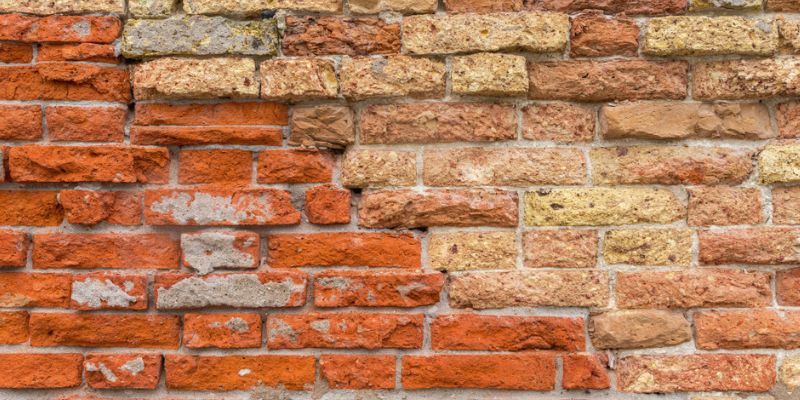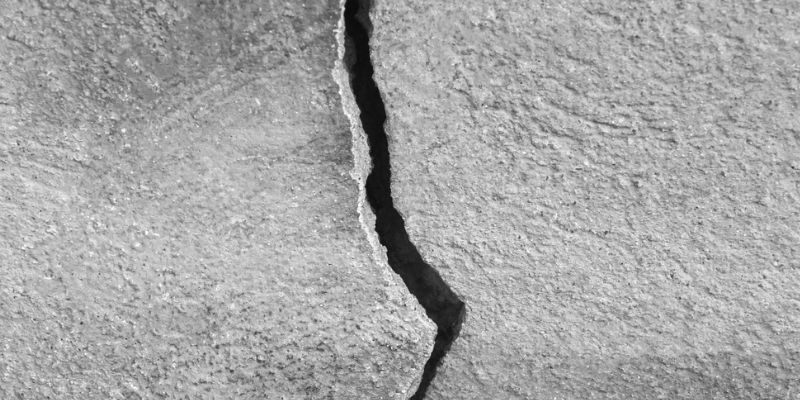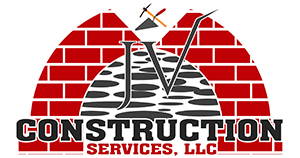When it comes to masonry, two particular materials stand out: Brick and Stone. Although both are renowned for their strength and durability, they are not immune to the test of time and changing weather conditions. At JV Construction, we understand how frustrating it can be to start noticing cracked walls, loose stones, or annoying stains in your outdoors—and even worse, not knowing what to do about them. That’s why, in this blog, we’ve put together a comprehensive guide to help you understand the most common masonry problems and solutions —so you can confidently take the next step in your repair process, whether you decide to do it yourself or call in a professional.

Understanding Brick and Stone Masonry Repairs
Just like with any other repair project, masonry fixes can range from a quick clean-up to more complex tasks like structural reinforcement. The type of repair (DIY vs. Professional) your home needs will depend on the material, the extent of the damage, and how long the problem has been there.
Brick and stone have different characteristics and respond to wear and tear in different ways. Most of the time, brick repairs focus on mortar joints and surface cracks, while stone repairs might involve stabilizing larger sections or addressing excess moisture or water damage. In both cases, getting familiar with the material can help recognize early warning signs and take action before minor issues become major problems and costly repairs.
Most Common Masonry Problems in Brick and How to Fix Them

Cracks in Bricks and Mortar Joints
If you notice cracks in masonry brick walls, it’s a sign that moisture has penetrated the surface and begun to expand and contract with temperature swings. These can range from harmless hairline fractures to more serious splits that threaten the integrity of your wall.
Small Cracks
For minor fissures, a simple tuckpointing approach works wonders. Clean out debris, apply fresh mortar, and smooth it flush with the existing joint. This basic DIY masonry repair keeps moisture out and restores your wall’s appearance.
Structural Cracks
Wider, vertical cracks often indicate settling or foundation shifts. These require routing out the damaged mortar, installing flexible backer rod if needed, and applying a high-strength repair compound. In extreme cases, steel reinforcement may be inserted before repointing to lock the wall back into place and restore its structural integrity.

Brick Spalling or Flaking Bricks
Spalling (where brickwork faces chip or peel away) occurs when trapped moisture freezes and expands. To repair this, it’s necessary to chip out any loose material, saturate the cavity with a bonding agent, and then rebuild the surface using a compatible patching mortar. For extensive spalling, select bricks that match the original color and size, and replace them entirely to prevent further breakdown.

Efflorescense
A white, powdery deposit on brick surfaces signals salt migration toward the surface. Efflorescence won’t harm the brick itself, but can be unsightly. Removing it is a DIY friendly task: Start by dry-brushing the residue away, then apply a masonry cleaner solution, and finally, seal the surface with a breathable water repellent to stop salts from resurfacing.
Most Common Stone Masonry Problems and How to Fix Them

Surface Cracks and Stone Damage
Minor Surface Cracks
Shallow cracks in stone are usually the result of freezing water or minor impacts. To fix them, you must clean the crack thoroughly, fill it with a color-matched stone epoxy, and, once cured, sand it flush to blend seamlessly with the surrounding surface.
Wide/Structural Cracks
Large cracks in masonry walls or structures often indicate structural damage and require rebuilding the affected joint or section. To do this, carefully remove the damaged stone and mortar, insert a stainless-steel pin for alignment if needed, then reset with fresh mortar formulated specifically for your stone. Ensuring proper drainage behind the veneer will help prevent future issues.

Loose or Shifting Stones
Stones that shift or lean out appear when the mortar bed fails. To correct, carefully remove adjacent stones, clean the old mortar from the backs, and reset each piece using a high-bond mortar. Use proper bedding techniques to channel water away from the wall.

Mortar Deterioration Between Stones
Signs of masonry deterioration often emerge as crumbling or missing mortar. To address this, repointing is the solution: grind out old joints to a consistent depth, dampen the stone faces, then pack new mortar in layers until fully filled. Too-quick drying can cause shrinkage, so mist between layers for best results.

Stains and Discoloration
Organic or mold growth, rust, humidity, or mineral staining can affect even the most robust stone. A good clean-up is all it takes to repair this most of the time: Begin with a gentle wash using a mild detergent or proprietary stone cleaner. And for stubborn stains, poultice clay mixed with a cleaning agent draws out discoloration. Always rinse thoroughly and allow stones to dry completely before sealing.
DIY Repair vs When to Call a Professional Contractor
Now that you’ve seen the most frequent masonry issues and their solutions, we’ve built a quick reference guide to help you decide which projects are safe for a DIY approach and which are better for professional masons. Remember, while some minor fixes can be approached with a bit of time and the right materials, more complex issues and severe damage require specialized skills and tools to ensure a safe and lasting repair.
For Brick Damage
| Problem | DIY Friendly? | Our Comments |
| Small Cracks | Yes | Minor Tuckpointing can be done with basic tools and accessible materials. |
| Wide/Structural Cracks | No | These often indicate foundation issues and structural weakness and require professional assessment. |
| Spalling/Flaking | No | Require brick replacement and proper mortar work. |
| Efflorescense | Yes ( | Surface cleaning with mild solutions is DIY safe. |
For Stone Damage
| Problem | DIY Friendly? | Our Comments |
| Small Cracks | Yes | Can be filled with color-matched stone epoxy. |
| Wide/Structural Cracks | No | Indicates deep masonry damage and involves rebuilding sections and steel reinforcements. |
| Loose or Shifting Stones | No | Needs resetting and rebedding with high-bond mortar. |
| Mortar Deterioration | Yes (for small areas only) / No (for extensive damage) | Repointing small sections is DIY friendly, but larger areas should be handled by a mason. |
| Stains and Discoloration | Yes | Surface cleaning with stone-safe cleaners can be done at home. However, stubborn stains might require power washing or professional cleaning equipment. |

Need Professional Brick and Stone Masonry Services?
Whether you’ve already identified your masonry issue (stonework or brickwork) or are still doubting what’s causing the problem and how to address it, taking action sooner rather than later is key. All timely repairs help prevent minor damage from turning into costly structural concerns.
If you’re unsure what your next step should be, let JV Construction help. Contact our reliable team in Knoxville, Tennessee, to schedule a masonry inspection and repair and get expert advice tailored to your home’s needs.


Recent Comments